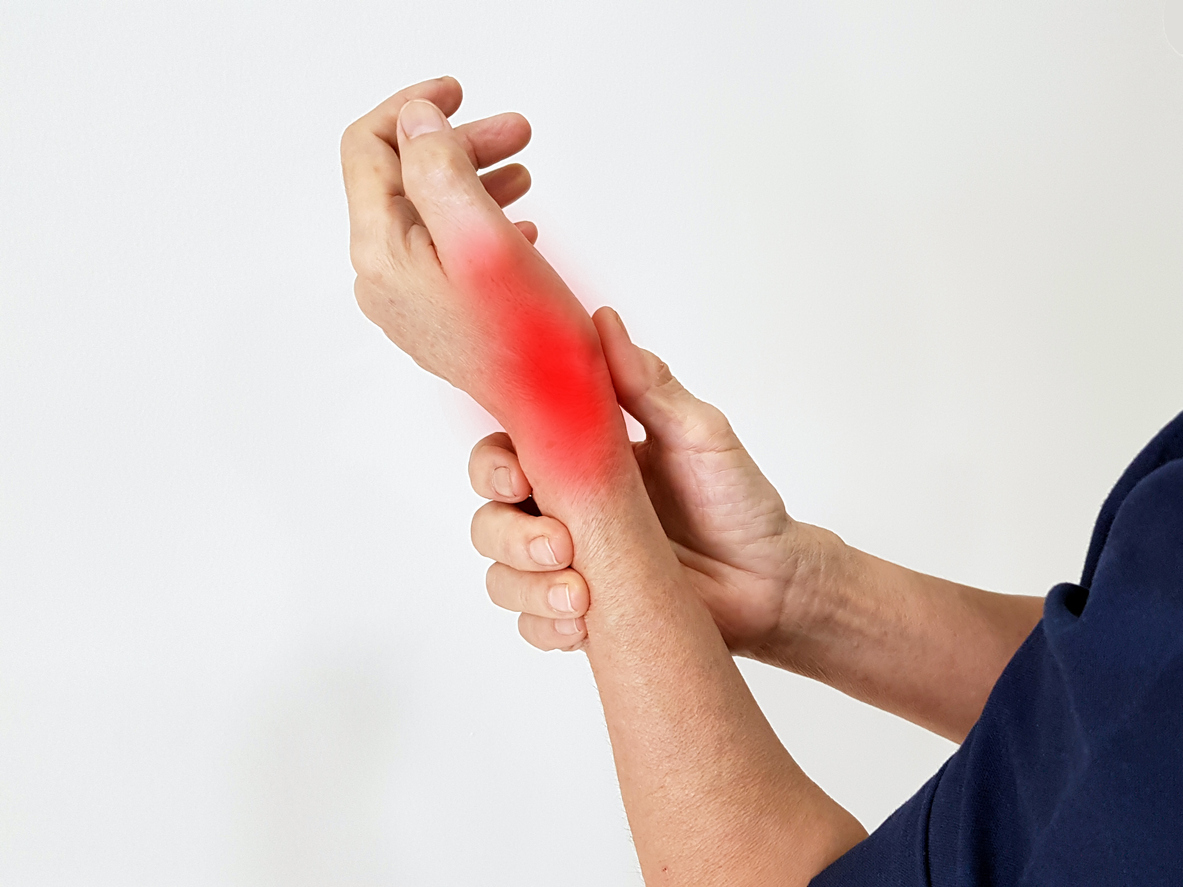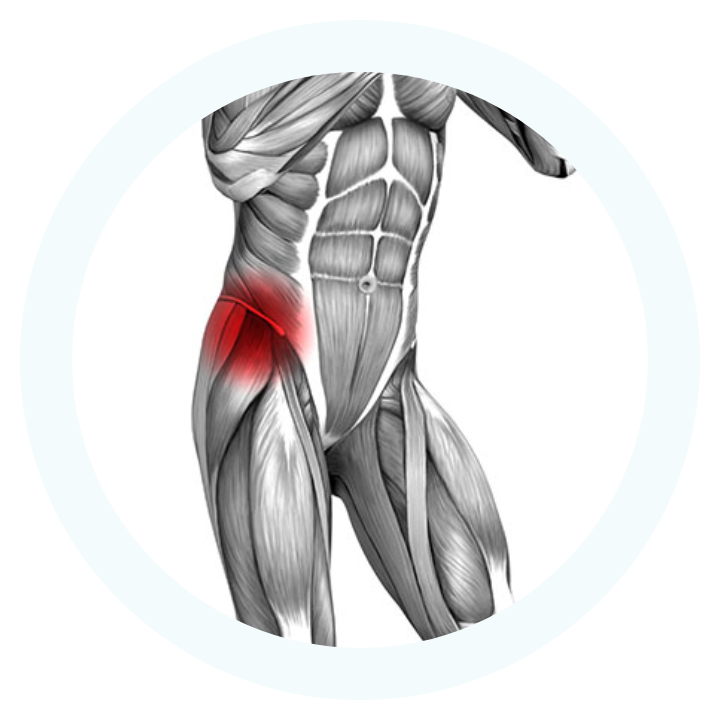Treatment for HIP Pain
In Texas


Common Causes of Hip Pain
- Osteoarthritis: Osteoarthritis in the hip joint occurs when the cartilage that cushions the joint wears away, leading to pain, stiffness, and decreased range of motion.
- Greater Trochanteric/Ischial Bursitis: Bursitis is the inflammation of the bursae, small fluid-filled sacs that cushion the hip joint. This can cause pain and tenderness in the hip, particularly with movement.
- Tendonitis: Tendonitis in the hip is the inflammation of the tendons, which are the connective tissues that attach muscles to bones. This condition often results from overuse or repetitive movements.
- Hip Labral Tear: A hip labral tear involves damage to the ring of cartilage (labrum) that follows the outside rim of the hip joint socket. This can cause pain, stiffness, and a clicking sensation in the hip.
- Hip Fractures: Hip fractures, often caused by falls or trauma, can lead to severe pain and disability. This condition is particularly common in older adults with osteoporosis.
- Muscle Strain: Muscle strain in the hip area can result from overuse, sudden movements, or heavy lifting. This causes pain, stiffness, and muscle spasms.
- Hip Impingement: Hip impingement, or femoroacetabular impingement (FAI), occurs when there is abnormal contact between the hip bones, leading to joint damage and pain.
- Hip Dislocation: A hip dislocation happens when the ball of the hip joint comes out of the socket. This typically results from trauma and causes severe pain and immobility.
- Hip Dysplasia: Hip dysplasia is a condition where the hip socket does not fully cover the ball portion of the upper thighbone, leading to dislocation and pain.
- Sacroiliac Joint Dysfunction: The sacroiliac joint, which connects the lower spine to the pelvis, can become inflamed or dysfunctional, causing pain in the hip and lower back.
- Myofascial Pain Syndrome Myofascial pain syndrome involves the development of trigger points in the muscles of the hip area. These trigger points can cause referred pain and tenderness.
- Snapping Hip Syndrome: Snapping hip syndrome occurs when a tendon or muscle moves over a bony prominence in the hip, causing a snapping sensation and sometimes pain.
- Iliotibial (IT) Band Syndrome: IT band syndrome occurs when the iliotibial band, a thick band of tissue that runs from the hip to the knee, becomes tight or inflamed. This can cause pain on the outer side of the hip and knee, often associated with overuse or repetitive movements.
Diagnosing Hip Pain
Diagnosis of hip pain involves a comprehensive medical history and physical examination. Imaging tests such as X-rays, Arthrograms, MRI, or CT scans may be used to identify the underlying cause. In some cases, blood tests or nerve conduction studies may be necessary to rule out other conditions.

Treatment Options for Hip Pain
- Corticosteroid Injections: Corticosteroid Injections: Injections of corticosteroids into the hip joint to reduce inflammation and pain, providing relief for various hip conditions.
- Peripheral Nerve Blocks: Nerve blocks involve injecting a local anesthetic near the nerves that supply the hip joint. This can help diagnose and relieve pain originating from these joints.
- Radiofrequency Ablation (RFA): Radiofrequency ablation uses heat generated by radio waves to destroy the nerves transmitting pain signals from the hip joint, providing long-term pain relief.
- Trigger Point Injections: Trigger point injections involve injecting a local anesthetic into specific points in the muscles of the hip to relieve pain caused by muscle tension and spasms.
- Platelet-Rich Plasma (PRP) Injection: PRP therapy involves injecting a concentration of the patient's own platelets to promote healing and reduce pain in injured or inflamed hip tissues.
- Amniotic Injections: Amniotic injections use amniotic fluid or tissue to promote healing and reduce inflammation, providing relief for hip injuries and degenerative conditions.
- Exosome Injections: Exosome injections deliver regenerative particles that can aid in the healing of damaged hip tissues, reducing pain and improving function.
- Prolotherapy: Prolotherapy is an injection-based treatment that involves injecting a solution (often dextrose) into the injured or painful area to stimulate the body's natural healing processes, thereby reducing pain and improving function in the hip.
- Over-the-Counter Pain Relievers: Ibuprofen, acetaminophen, and naproxen can help reduce pain and inflammation associated with hip conditions.
- Prescription Medications: Anti-inflammatory drugs, muscle relaxants, and pain relievers may be prescribed for severe pain and inflammation in the hip.
- Anti-Inflammatory Creams: Topical creams containing anti-inflammatory agents can be applied to the hip to reduce pain and swelling.
- Exercise Programs: Tailored exercises to strengthen the muscles around the hip, improve flexibility, and restore range of motion.
- Manual Therapy: Techniques such as massage, mobilization, and stretching to relieve muscle tension, improve mobility, and reduce pain in the hip.
- Acupuncture: Insertion of fine needles into specific points on the body to relieve pain and promote healing, which can be effective for preventing and treating various types of hip pain.
- Chiropractic Care: Joint adjustments and manipulations to improve alignment and reduce pain in the hip, particularly for conditions related to nerve compression.
- Massage Therapy: Techniques to reduce muscle tension, promote relaxation, and alleviate pain in the hip.
- Transcutaneous Electrical Nerve Stimulation (TENs) Unit: A device that uses electrical currents to stimulate nerves and reduce pain, which can be helpful for managing chronic hip pain.
- Braces & Supports: Supportive braces and supports can help stabilize the hip, reducing pain and preventing further injury.
- Ultrasound Therapy: Use of sound waves to promote tissue healing and reduce inflammation, which can help alleviate pain in the hip.
- Shockwave Therapy: A non-invasive treatment that uses shockwaves to stimulate healing and reduce pain, which can be beneficial for certain types of chronic hip pain.
Interventional Therapies
Medications
Physical Therapy
Alternative Treatments
Conclusion
Shoulder pain can be debilitating, but with the right approach, it can be effectively managed. Understanding the cause of your shoulder pain and working with healthcare professionals to develop a personalized treatment plan can help you find relief and improve your quality of life. If you are struggling with persistent or severe shoulder pain, seek medical advice to explore your options for diagnosis and treatment.
